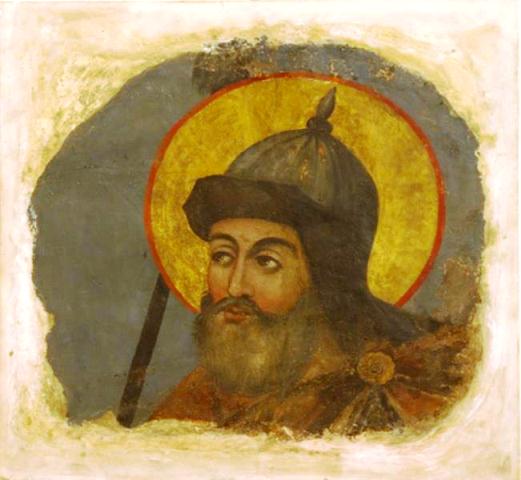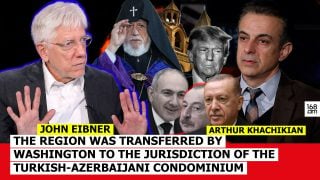
How Accusation was Brought against Khrimian Hayrik

Great sins are attributed to great people. This isn’t regularity, however, such a tendency exists: some internal human aspiration seemingly needs to decrease difference between themselves and those, who are exclusive by their title and individuality. We come across with an episode of similar attitude, which relates reformist activity of Catholicos of all Armenians Mkrtich A.Khrimian—Khrimian Hayrik.
Sources of the church write about those plans the following way, “Renovations of the Cathedral are in process. The Catholicos is giving instructions to start renovation of the Cathedral. However, under certain reasons intention of Hayrik wasn’t brought into life, and launched works remain unfinished.”
And intentions could have failed to be realized, which is quite natural. Interesting point in this story is something different. It refers hard criticism addressed to Khrimian Hayrik. In particular, the Catholicos is being condemned for the fact, that as a result of his undertakings precious cultural values have been sacrificed, interior of the Cathedral suffered great losses, works of art were missing.
However, how grounded and reasoned is such reprobation? It’s worth judging upon succession of developments.

Khrimian Hayrik
Khrimian Hayrik undertakes renovation of Etchmiadzin Cathedral in 1895. 15 years later, in 1910, Arshak Chopanyan, famous writer and social figure, records in resentment that, Khrimian Hayrik “spoiled and destroyed with unbelievable vandalism by satisfying the incomprehensible whim” the paintings and jewelry of the Cathedral. Chopanyan said, that frescoes of the dome were saved only after interference of specialists of archeological company in St. Petersburg, and paintings in the church have been sent to different churches of villages.
Another prominent figure—Maghakia Ormanyan, armenologist and historian, claims almost the same in one of his works, informing that internal decorations and paintings by Naghash Hovnatan have been destroyed and “out of 120 paintings only 20 were left thrown in the museum.”
Edifice of Cilician Catholicos Garegin Hovsepyan, who stated with regret that a “Big mistake was made towards Armenian art under Khrimian Catholicos.” He wrote, that without initial covering of financial expenditures, purchasing necessary materials for renovation, frescoes have been destroyed, ornaments have been erased without consultation with specialists and painters, paintings were eliminated, which started to peel from humidity.
Thus, writer Gostan Zarian ironically concludes, that “An “enlightened” catholicos, the same Khrimian, for the sake of progress and civilization, calling them old things, ordered to cover some nice part of the fresco, and not a single threatening gun banned that crime.”

Etchmiadzin Cathedral in 1874
Is this all true? Could a cautious and reasonable personality like Khrimian Hayrik demonstrate such improvidence and arbitrariness, when it refers to destiny of spiritual heritage? And was his action crime, which could have been prevented with a gun?
A few considerations should be taken into account to answer these questions. Let’s start from the fact that nobody from those blaming His Holiness in vandalism was a witness of that reality. They all composed their ideas later, under the influence of this or that talk, information, particularly not going deep into nuances and details of the issue.
Let’s consider the story of 100 paintings, for which Khrimian Hayrik is regarded as responsible.
Which paintings are meant? Who were the authors and where have they been exhibited? There is no concrete and reliable edifice, that there were 100-120 paintings in the Cathedral in that period. Instead, what was existent, almost everything is available up to now. If in that case the hint refers to paintings of Naghash, then, yes, some part has been destroyed, but not in late 19th century, but earlier—in the 18th, when under some Catholicoses old-fashioned paintings have been removed being substituted by new ones. Moreover, another curious circumstance may be brought as well: new works have been performed by sons and grandchildren of Naghash, i.e. they were the ones taking old paintings and substituting them by new ones. And even if we accept allegations, that all the paintings have been removed by the order of Khrimian considering them intolerable in the Cathedral, this doesn’t mean that they’re destroyed.
The same way confirmations, that Khrimian Hayrik didn’t take into consideration advice of specialists and painters aren’t grounded either. For instance, a letter by Khrimian Hayrik is kept written on 5 August, 1994. It was addressed to Mkrian priest. In this very letter the Catholicos wrote, that he initiated construction of a new matenadaran, as well as designing of the cathedral, and he’s looking for an artist, a “portraitist.” Then he added, “Internal renovation of Etchmiadzin Cathedral will be launched in the coming spring, in which prominent figures from both old and new Testaments will be made.” For this very purpose he invited a painter Petros Srapyan from Constantinople to Etchmiadzin. Later on, painter Vardges Sureniants came to the Cathedral to make new frescoes.
The Catholicos was really going to remove frescoes of the Cathedral and illustrate inside the building with Armenian style. However, he forcedly took that step. The point is, during those years unfavorable conditions, rainwater, humidity have completely bleached the patterned layers. Lots of edifice may be found in notes of people visiting Etchmiadzin in that period. There was one way out: take out frescoes part by part and move to a safer place, then create new ones, which Khrimian Hayrik did. Upon order of the Catholicos some part of frescoes was taken and maintained in the museum, some of them may be presently observed in the National Gallery of Armenia.


Fragments of the ornaments preserved from the Cathedral
As for the point why the plan wasn’t finished, reasons for this were quite numerous. And referred not only shortage of means and possibilities. It’s a well-known fact, that in late 1890s anti-Khrimian moods have been generated. They were being fermented both in separate social layers and among the priests. This artificial fire was kept lit by some members of the congregation, as well as “Mshak” newspaper under the veil of liberal views.
Political developments of that period in their turn brought such a burden of follow-ups and concerns to the leader of the Armenian church, that Khrimian Hayrik had to leave his plan unaccomplished and settle urgent and vital issues. And in the turmoil of unstable and unsteady times there is nothing easier than seeking for the guilty and scattering blames.
By Hovik Charkhchyan























